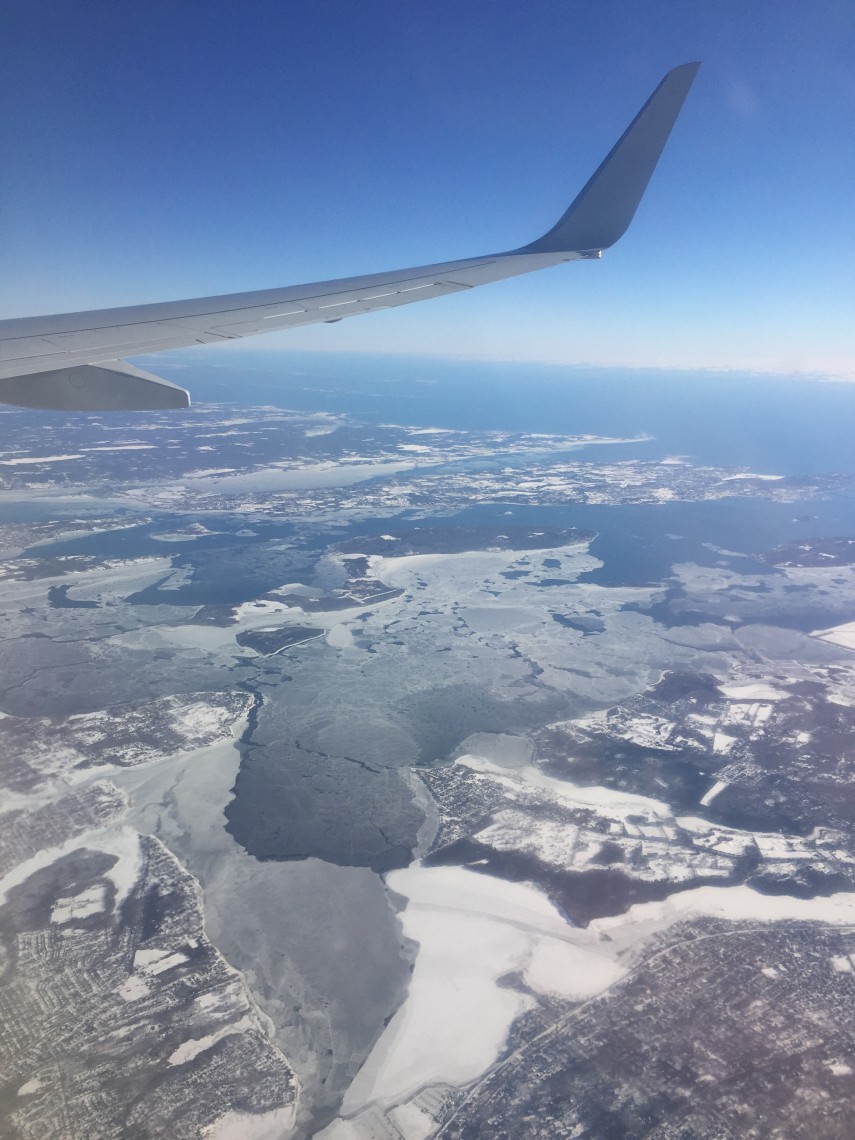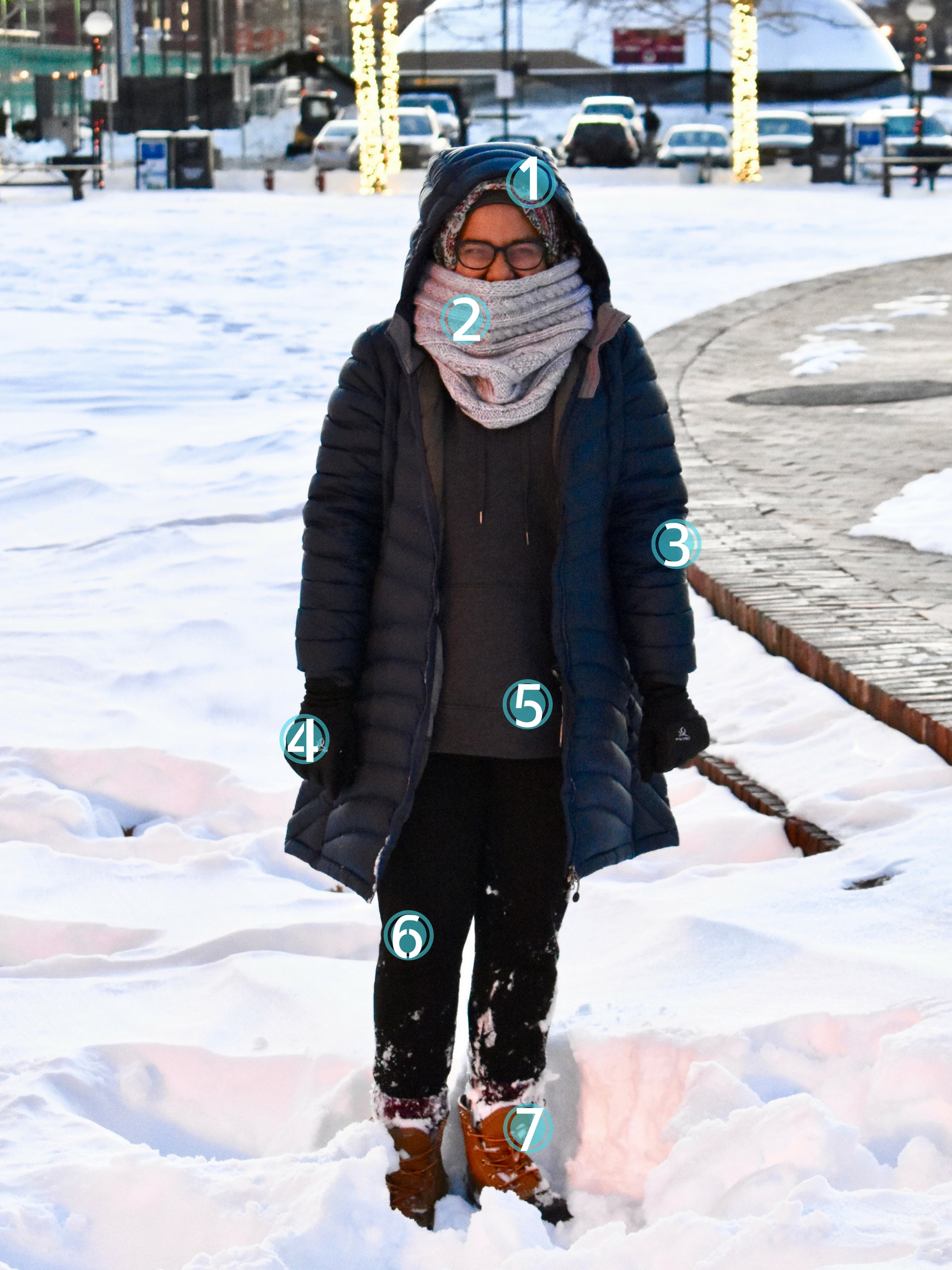A Texan’s Guide to Surviving a Boston Winter by Afeefah K. '21
it's possible
It’s IAP and I’ve slowly but surely gotten into the rhythm of things. To the point where it feels like I never left for winter break at all.
But things have changed. I mean DRASTICALLY and COMPLETELY changed.
This is what the East Coast looks like from an airplane window:
I’d imagine that is exactly what Antarctica looks like.
With the wet residue of the daunting “bomb cyclone” covering everything that isn’t concrete and temperatures that keep fluctuating between freezing and way below freezing, proper winter attire has become really REALLY important.
Having dealt with no more than an inch or two of snow at a time, figuring out how to stay warm (and dry) in a Boston winter has been an adventure. It’s been a lot of advice from experienced friends, googling and learning from mistakes.
I’d like to think that I’ve finally nailed it. So for those of you that are winter-naive (like myself), there’s hope. And for those of you that were born in a six-foot pile of snow, feel free to share your own tips and tricks. But here go my own:
sidenote: i’m not sure if i’m smiling in this picture or squinting because i can’t see through my foggy glasses
1) Merino Headwear = Warm Head
Merino wool works miracles. In fact, I’m also wearing Merino wool socks in this picture. Merino wool comes from (you guessed it) Merino sheep and has quite a few special properties that do us good. It traps in and uses dead air as an insulator, keeping you nice and warm. Merino wool can also absorb 30% of its weight worth of moisture. So if you fell into a pile of snow because you didn’t realize it was three feet deep, chances are your feet will not be soaking wet. Not to mention, it’s also super comfy. Along with the socks, I wear a merino headband under my headscarf. It does an excellent job of keeping my ears warm.
2) Keep That Cold Air out of your Nose and Mouth
Being asthmatic, cold air is basically my worst enemy (cold air=dry air). And even if you do have a healthy set of lungs, constantly breathing in cold air puts a lot of unnecessary pressure on your lungs. I wear an infinity scarf that I typically will pull over my mouth and nose to prewarm the air before it enters my system. It’s also recommended to breath in through your nose and out through your mouth.
3) If There is Anything you SHOULD be wearing, it’s an Insulated Jacket
Honestly though. If there is any one thing you should put on before stepping out, it’s a properly insulated jacket. I like to think that the poofier and the longer, the better. I bought my jacket from LL.Bean (Maine-based company) and it’s been my best investment so far. It’s filled with goose feathers which keeps me nice and warm and is also water resistant. A huge reason I don’t feel cold when I step out is because of this guy. 10/10 would recommend.
4) Warm Gloves (plus points for touchscreen ones)
Often times the first thing that gets cold in the winter are your phalanges (i always loved that word). I have seven pairs of gloves (why do you have seven pairs of gloves afeefah? Because it’s surprisingly easy to lose them) I have a few wool gloves I bought off of amazon, a pair that are water resistant and good for snow and a touchscreen pair that I wear the most. You’d be surprised, but your hands can get really cold in the five seconds that you take a glove off to deal with your phone.
5)layer LAYER L A Y E R
If you couldn’t tell from the exaggeration above, layering is key. In fact, 80% of winter survival is wearing more layers than you thought possible. I typically will wear thermals, a long shirt, a sweater and then my jacket. It might feel like a lot, but when that windshield hits you, you’ll be grateful (my parents would be proud to hear me say that). The key to layering is making sure you don’t overdo it. A good rule of thumb is to have a base layer (thermals in my case, really anything that is warm and breathable), a mid layer (shirt with sweater, can easily be replaced with a fleece) and a shell layer, (my big poofy penguin jacket). Remember guys: LAYER.
6)Thick Pants Please
Legs can get really cold. There was this one time back in the fall when I walked across the Harvard bridge in leggings and I kid you not, it took a solid 90 minutes for my legs to thaw. Lesson learned. Wear thick pants. In fact, as needed I often will wear wool leggings under my pants for extra warmth.
7) Waterproof Boots (and because i’m basic, a pair of bean boots)
With piles of snow everywhere and little patches of invisible ice hidden here and there, my boots are coming in clutch. The general idea is to invest in a pair of boots that are warm, waterproof and have good tread. If your feet are cold your entire body will feel cold. If your feet are warm your entire body feels warm.You also want to make sure you pick a pair that are waterproof, because eventually all snow and ice becomes frigid water. As a college student that walks everywhere, tread was the most important factor in choosing a good pair of boots. While the bean boots don’t have incredible tread, they keep from slipping on the patches of ice around campus. And that’s really all I can ask for. People invest in a variety of different boots. In addition to the bean boots (which is a classic boston look, no really, every other person wears them), many go the less orthodox route with timberlands, bogs and hunters.
And that’s all y’all. Stay Warm.

